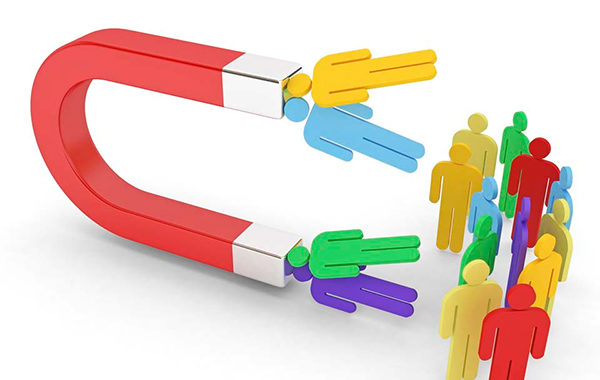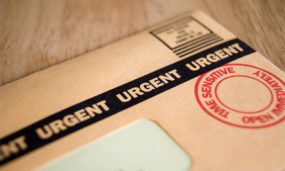This post is about acquiring new donors.
But it’s for nonprofits at a very specific stage in their development.
Keep reading if the following three things are true for your organization:
- You’re actively trying to grow
- You realize that to achieve that growth you need more new donors each year than you’ve been acquiring
- You know that your current ways of acquiring new donors won’t achieve your new goals
I’ll give you an example. We work with a handful of organizations that have between 500 and 4,000 donors. These organizations want to grow… but the ways they acquire new donors are labor-intensive and are hard to expand:
- Tours of their facility
- An event or two a year
- Word of mouth
- A major donor connects them to another major donor
- Vision Meetings
All good things – but small nonprofits can only do so many of them each year.
So the organization is stuck: they want to grow, know they need more donors, but don’t have the staff to do more.
If That’s You, What Do You Do?
If that’s you, please know that you’re in good company. A LOT of organizations are in your shoes.
But your question remains: how do you begin to acquire significantly more new donors than you have in the past?
It starts with thinking differently about acquiring donors. The Big Idea is that there is a cost associated with acquiring new donors. You’re going to need to pay for the attention of potential donors via media like radio, the mail, Facebook ads, etc.
In my experience, most smaller nonprofits never make the leap from homegrown, labor-intensive methods of acquiring donors. These smaller nonprofits don’t want to pay (or don’t think they can’t afford) the costs needed to do this.
But if they really want to grow, they need to.
Making the Leap
Below are my tips for “making the leap” to a new way of acquiring new donors.
And I need to say right away that I’m not providing the solution to your donor acquisition problem. This is not “7 easy tricks to more donors than you can count!” (That post would probably get a lot of readers, but it wouldn’t hold water because there is no silver bullet.)
The Current Situation
Most small nonprofits have no line item in the budget for donor acquisition. They also really don’t know their current cost for every donor acquired, because those costs are buried in other expenses.
For example, they might spend $50,000 on an event that acquires 100 new donors. But the expenses are only looked at in relation to how much revenue came in, not how many new donors were acquired.
What’s needed is a dedicated budget for donor acquisition.
How to Grow
Smaller nonprofits basically have two options for growth. You can pursue either one, or both:
- Start a scalable Donor Acquisition program. This means doing specific activities like buying radio spots and/or mailing lists, upping your online donor acquisition game, etc.
- For example: doing a radio share-a-thon for $15,000, getting 500 new donors, then doing that every year moving forward. And this is scalable because you could do two radio share-a-thons for $30,000 and acquire 1,000 new donors. Or 3 radio share-a-thons for $45,000 and acquire 1,500 new donors.
- Do more of what you’re currently doing. (For clarity’s sake, I would define what most smaller orgs are doing in donor acquisition as not scalable. Could you expand your event and get 250 more donors? Maybe. Could you add three more events and get 750 new donors? Probably not.)
In my experience, “doing more of what you’re currently doing” almost never results in the type of growth a motivated organization is looking for.
So they have to bite the bullet. They have to pay the costs to start up a donor acquisition program.
Ask a Good Question
The most successful organization leaders, when they want to grow, are asking one of these questions:
- “I have $XX,XXX to spend on getting new donors in 2018. How many new donors could we get for that?”
- “I need X,XXX new donors in 2018. How much is it going to cost me?”
- “By 2020 I need to have our income be 50% higher than 2017. How many new donors do we need to reach that level, and how much will it cost?”
If you know how much you have to spend, we can estimate how many new donors you can acquire.
If you know how many new donors you want to acquire, we can estimate how much it will cost you.
If you know how much you want to be raising 5 years from now, based on how your current donors are performing, we can tell you how many new donors you’ll need, to reach your goals.
Helpful Big Ideas
For organizations who want to begin scalable donor acquisition, there’s a set of ideas that more-or-less must be present in your organization for it to work:
- If your organization is serious about acquiring new donors, you’ll have a line item in your budget for Donor Acquisition.
- Measuring the Cost Per New Donor is a sign of maturity for an organization. It means you’re running the thing like a business, with known (and measured) inputs and known (and predictable) outcomes.
- Scalable methods of donor acquisition require an investment mindset. Usually in donor acquisition you lose money in the short term, but you make money in the long term. For example, you might spend $1,000 and get 10 donors who each give you $50. So you spent $1,000 to raise $500. BUT, if you do a good job retaining those 10 donors they’ll give you $3,000 over the course of their time with you. So you actually spent $1,000 to raise $3,000.
- There’s no way to know exactly how much a new donor will cost for an organization without testing. But there are industry standards and deep experience for every media channel – even Instagram, believe it or not. Find somebody or some organization who is doing a lot of donor acquisition, and ask them. In my experience, people will help you.
- The Cost Per New Donor is always higher when you first start scalable acquisition methods. That’s because you do not know what will work best. Over time, you figure out which messages and mediums work best, and the cost per new donor comes down over time. (This is another reason it’s so important to have an investment mindset when you start to scale your acquisition.)
- There is a “minimum level of investment” to start a donor acquisition program. For instance, if a radio share-a-thon costs $20k and gets you 200 donors, you can’t buy half a share-a-thon for $10,000 and get 100 donors. And by the way, Dear Reader, I don’t think you need to hear this. But I share it because there’s always someone on a Board that says, “Could we just buy seven commercials and see if that works?” What you want to do is figure out what the “minimum effective test” is, and do that. Not half of that.
Moving to this type of donor acquisition is a great sign of growth and maturity for an organization. It’s almost always a sign of a nonprofit being run like a business – and I mean that in the best way possible. It’s being a great steward of the resources given to us by donors to maximize their impact.
Good luck out there – and get in touch if you’d like to talk about donor acquisition!
Steven Screen is Co-Founder of The Better Fundraising Company and lead author of its blog. With over 30 years' fundraising experience, he gets energized by helping organizations understand how they can raise more money. He’s a second-generation fundraiser, a past winner of the Direct Mail Package of the Year, and data-driven.









2 comments on “Make “The Leap” to Acquire a LOT of new donors”